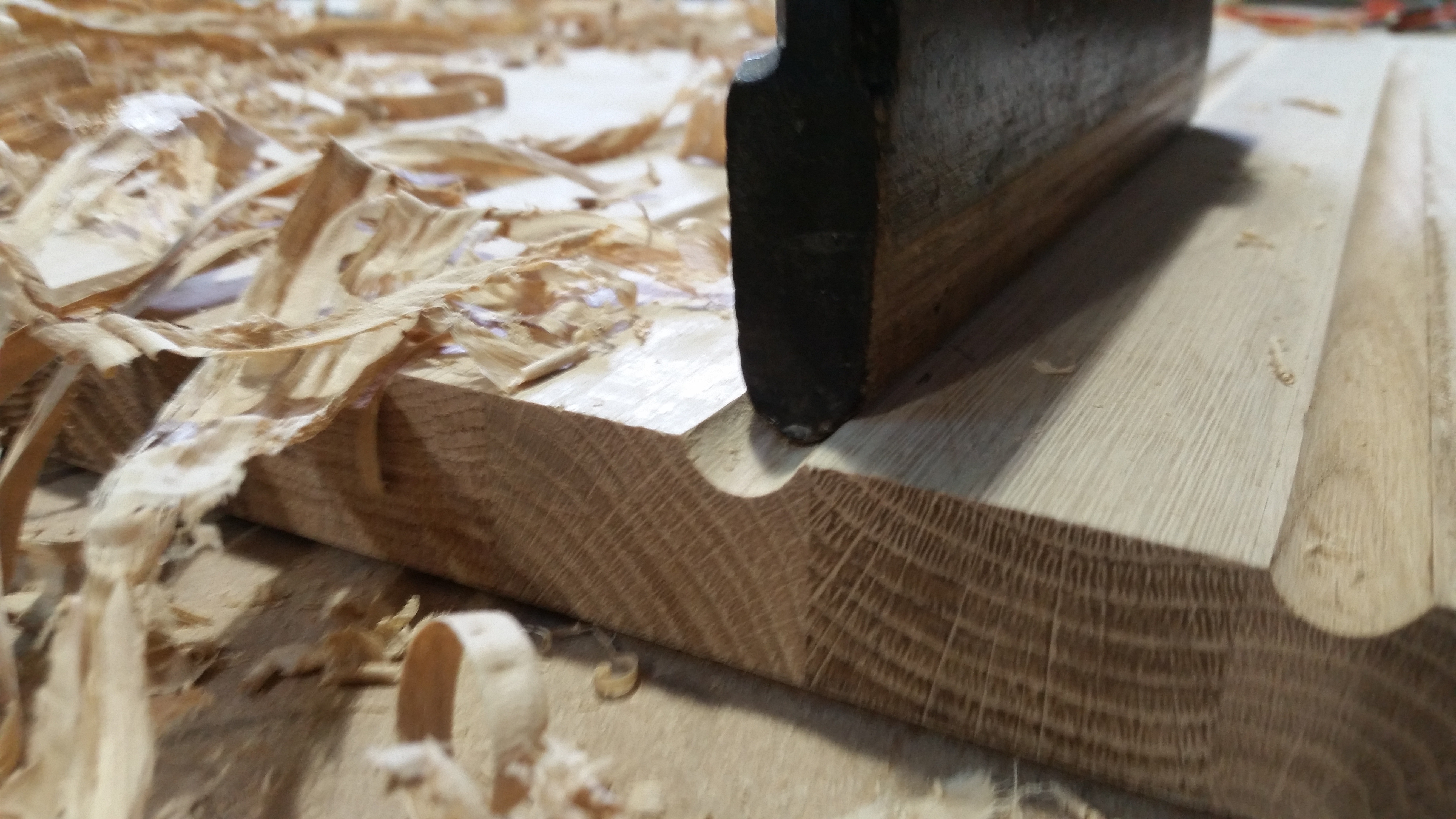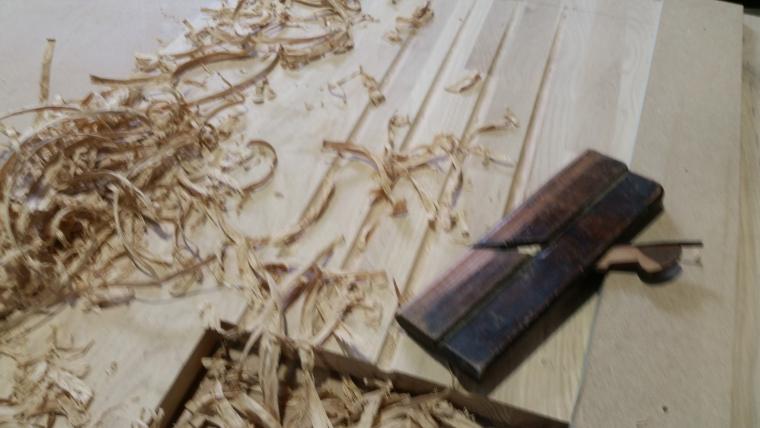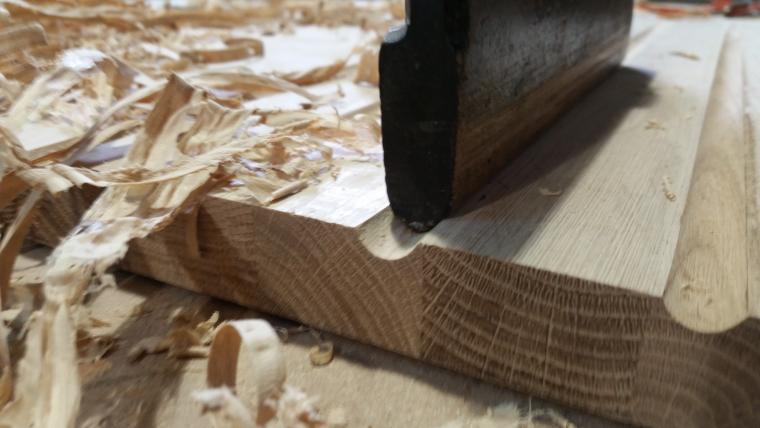Moulding Plane Beats Router

It's not often a moulding plane is useful in most typical joinery workshops today. Not because the planes give poor results. It's just simply running out lots of sash profiles or skirting would take a long time. As an aside, if there is a client out there who is willing to have their sashes and mouldings made by hand only, do drop us a line! We have the planes, just not the patrons.
However I found myself in a situation recently where a moulding plane was faster and gave better results than any machine or power tool we have. We were fitting some oak worktops for a client that required some drainage grooves applied. On previous occasions we have reverted to a router and a jig. I hated that solution, it takes time to make a jig and one slip with the router and the whole worktop can be ruined.
As someone who can judge when a handtool is faster with a better outcome, I soon realised that a simple moulding plane was a much better solution. I picked up a rather beat up No8 round that I had never used. I gave it a basic sort out and set to work. All that was required was a batten clamped to the top and a pencil line for the depth of cut and another where I wanted the grooves to to stop. Working back from the sink recces the plane naturaully creates the sloped grooves. The only thing that was not so much fun was the wood in the worktop. It's one of the "Butcher Block" style that has multiple staves. Each stave seemed to have it's own grain direction, each direction seemed to be unhelpful but the shavings flowed nevertheless. Taking more time on the sharpness would help for sure.
A comment was made in the workshop "You love that kind of stuff, don't you". The simple response is yes I do.


